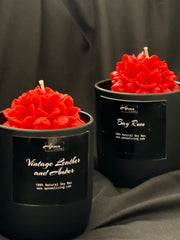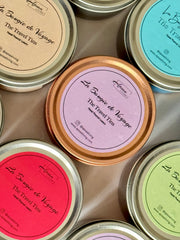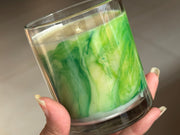Candle making is an art that involves more than just pouring wax into a container and adding a wick. One of the most critical aspects of candle making is choosing the right type of wax. At Apsaa Living, we understand the importance of selecting high-quality wax to create candles that not only look beautiful but also burn cleanly and emit captivating fragrances. In this blog post, we'll delve into the different types of wax used in candle making, discussing their pros and cons, and highlighting why we've chosen soy wax, coconut wax and beeswax for our Apsaa Living candles.
Types of Candle Wax:
Paraffin Wax: Paraffin wax is a widely used wax in candle making, derived from petroleum.- Pros: Affordable, readily available, excellent scent throw and low cost.
- Cons: Derived from petroleum, may release harmful chemicals when burned such as benzene and toluene, which can pose health risks if inhaled in large quantities or over prolonged periods, non-biodegradable.
- Pros: Renewable and biodegradable, clean-burning, long-lasting, excellent scent throw, supports farmers.
- Cons: Can be more expensive than paraffin wax, may have issues with frosting or wet spots.
- Pros: Natural and sustainable, emits a warm honey-like scent, long-lasting, clean-burning, emits negative ions that purify the air.
- Cons: More expensive than paraffin and soy wax, limited availability, may have a subtle honey scent that can interfere with fragrance.
Coconut Wax:
- Pros: Renewable and eco-friendly, clean-burning, excellent scent throw, beautiful creamy appearance.
- Cons: More expensive than paraffin wax, may have issues with scent retention in some formulations.
Why We Choose Soy Wax, Coconut and Beeswax: At Apsaa Living, we're committed to creating candles that not only enhance your space with captivating fragrances but also prioritise sustainability and eco-friendliness. That's why we've chosen to use soy wax, coconut, beeswax and their blends in our candle making.
Soy wax is derived from soybean oil, making it a renewable and biodegradable option. It burns cleanly and evenly, allowing for a longer-lasting candle with a strong scent throw. Additionally, by using soy wax, we support local farmers and reduce our environmental impact.
Beeswax, harvested from honeycomb, is another natural and sustainable option. It emits a warm, honey-like scent and burns cleanly without producing soot or toxins. Beeswax candles also emit negative ions when burned, which purify the air and create a healthier indoor environment. This is excellent for wax sachets as well.
coconut wax offers numerous benefits for candle making, including sustainability, clean-burning properties, excellent scent throw, longer burn time, beautiful appearance, and versatility. It is a popular choice for candle makers and consumers who prioritise eco-consciousness, quality, and performance.
Conclusion: When it comes to candle making, choosing the right wax is essential for creating high-quality candles that burn cleanly, emit captivating fragrances, and align with your values. At Apsaa Living, we're proud to use soy wax, coconut wax and beeswax in our candle making, allowing us to craft candles that not only enhance your home but also support sustainability and eco-conscious living.










Leave a comment